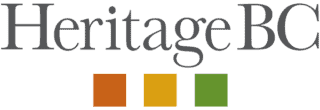- Heritage 101
- Advocacy
- Accessibility for Historic Places
- Climate & Sustainability
- Heritage Place Conservation
- Heritage Policy & Legislation
- Homeowners
- Intangible Cultural Heritage
- Reconciliation
- Indigenous Cultural Heritage
- Setting the Bar: A Reconciliation Guide for Heritage
- 1. Heritage and Reconciliation Pledge
- 2. Acknowledging Land and People
- 3. Celebrating Days of Recognition and Commemoration
- 4. With a Commitment to Learn
- 5. Committing to Strategic Organizational Diversity
- 6. Mission-Making Room for Reconciliation
- 7. Possession, Interpretation, Repatriation and Cultural Care
- 8. Shared Decision Making
- 9. Statements of Significance and other heritage planning documents
- 10. Heritage Conservation Tools, Local Government Act
- Racism: Do Not Let the Forgetting Prevail
- Taking Action: resources for diversity and inclusion
- Webinars On-Demand
ICH Influences and Developments
What are the newer developments that you see elsewhere, that could or should influence our work in British Columbia, regarding intangible heritage?
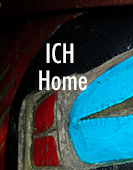 |
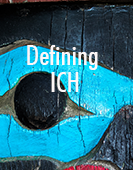 |
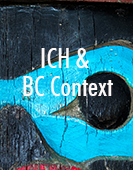 |
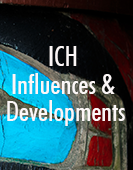 |
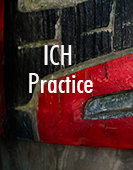 |
 |
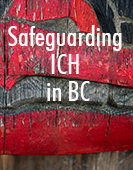 |
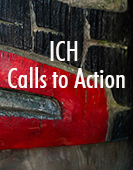 |
George
In terms of new developments, the elephant in the room these days is United Nations Declaration on the Rights of Indigenous Peoples (UNDRIP).
This non-binding resolution, adopted in 2007, is something that I think most people see as a good thing and many Indigenous peoples have seen this, in some cases, as the solution to many of their long-standing problems.
But in terms of the governments, that have reviewed and signed on to this, many of them, including Canada (which adopted it only in 2020) are starting to read the fine print. That is the case here in British Columbia. The challenge is that, in order to fulfill the promise that UNDRIP has for Indigenous peoples, these governments need to give up some degree of control over heritage and its legislation and protection.
Last year, the First Peoples Cultural Council here in British Columbia commissioned Dave Schaepe and Kierstin Dolata, both of the Stó:lō Research and Resources Management Centre (here), and myself to review BC’s heritage legislation and policies. In our report, Recommendations for Decolonizing British Columbia’s Heritage-Related Processes and Legislation (here), we examined 17 policies relative to the provisions of UNDRIP and Canada’s Truth and Reconciliation Commissions.
It is now a matter of governments and their representatives taking seriously what they are obliged to in terms of UNDRIP.
Agnieszka
There are several international developments that could work in BC, one of which I would advocate for is obviously Canada reassessing its position on the 2003 Convention for the Safeguarding of Intangible Cultural Heritage. In practical terms, I think a lot of countries are precedent-setting in their interpretations of heritage as well as how they approach the matter of intangible cultural heritage.
Countries in Southeast Asia with Japan and Korea leading the way can serve as wonderful examples, specifically things like funding for ICH custodians or knowledge holders. Allowing people to transmit their intangible cultural heritage or just their heritage, in general are important. For example, funds invested in indigenous languages is one step in enabling people to transmit their languages and providing them with the opportunity to revitalize their heritages. Providing opportunities not only to learn but also to pass down a language as a first language ensures not only language revitalization but also retention. Supporting and investing in language is a great endeavor but it needs a lot of work because at the individual level, families struggle with language acquisition.
Another example is from my work in Poland. The country is investing in saving and reviving dying craftsmanship such as blacksmithing. It’s not something that people have as a job anymore. Cheese-making is also very industrial this point and I know France is reviving some traditional cheese-making techniques. France is also investing in safeguarding Alençon needle craftsmanship. Those are things that people are still doing and they still want to pass these activities down.
Providing people with the opportunities to make sure that their cultural knowledges and practices don’t die is definitely something that needs to be brought into British Columbia and into Canada in general. Investing in people so elements of cultural heritage do not die along with their elders and their knowledge holders, especially for Indigenous people.
Katharine
I am glad George brought up UNDRIP because that is a very relevant development – but so recent a development as it came about in 2007. But what’s more recent is the Final Report of the Truth and Reconciliation Commission in 2015, and maybe we can consider these things building up on each other and moving in the general direction of Canada eventually reconsidering its position on the 2003 convention.
Another not-so-recent development is the Ethical Principles for the 2003 Convention that I brought up earlier. I think that’s another tool that goes along with UNDRIP and the TRC that really places the ownership of intangible cultural heritage with the communities and the peoples that practice it. Those are kind of like roadmaps, in a way, or tools that can point in the right direction in terms of better safeguarding of intangible heritage.
Similarly, I’d also like to plug a publication that we produced with the First People’s Cultural Council on Indigenous peoples and intangible cultural heritage (here).
Written by Karen Aird in collaboration with Gretchen Fox, this document urges Canada to have another look at that Convention as a resource to help bring about greater protections for safeguarding of Indigenous peoples’ intangible cultural heritage, and how that can be part of Canada’s new approach to implementing the United Nations Declaration on the Rights of Indigenous Peoples.
